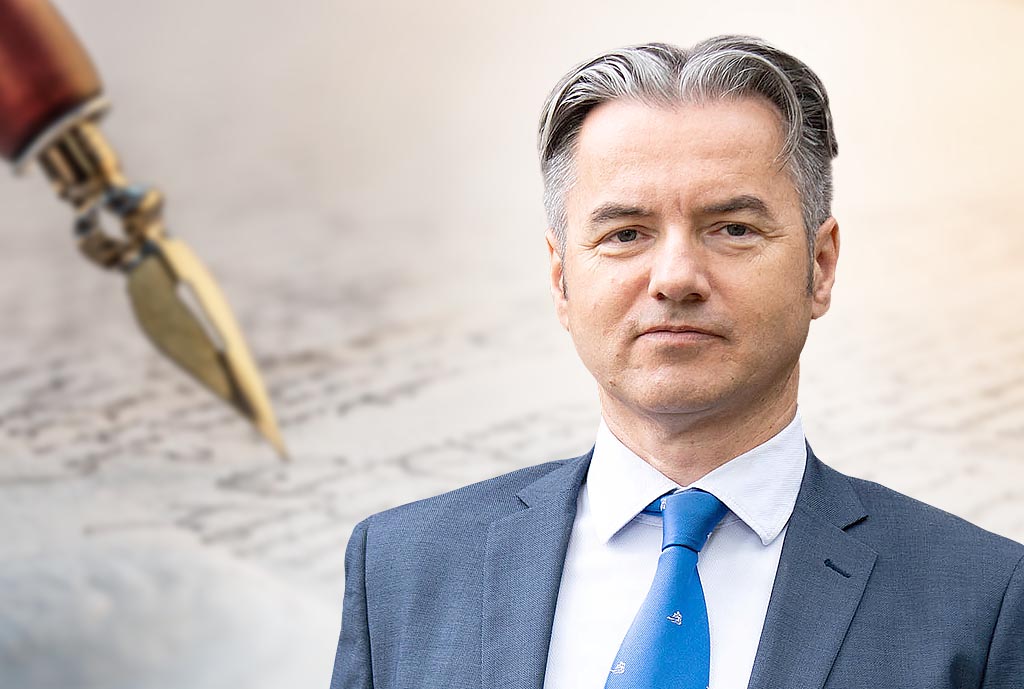By: Dr. Metod Berlec
The recent catastrophic natural disaster clearly demonstrated the difference in the political functioning and thinking of the two key political factions (simplified as blocs) in Slovenia, namely the left and the right. The characteristic of the former is an obsession with power, stemming from the fact that the ideological and ancestral predecessors of the current rulers came to power through a bloody communist revolution during and after World War II. In the years following, they did everything to retain their grip on power. In numerous instances, they achieved this through ruthless persecution and destruction of real, potential, and even imaginary opposition. Thus, they completely usurped control over all sectors of society. As expressed by Stane Dolanc, the Secretary of the Executive Bureau of the Presidency of the League of Communists of Slovenia on September 9th, 1972, in Split: “It must be clear to everyone that we, the Communists, are in power here, because if it were not us, it would be someone else, but that is not the case, and it never will be.”
In the late 1980s, under the leadership of Milan Kučan, the last head of the League of Communists of Slovenia, the party was forced to “step down from power”. This was compelled by the economic collapse of the Socialist Federal Republic of Yugoslavia (and hence the Socialist Republic of Slovenia), the crisis of planned economy, corruption, clientelism, inability to address people’s real problems, the downfall of communist regimes in Central and Eastern Europe, and the general dissatisfaction of the people. The emerging political alliances or parties effectively addressed this discontent with their programmes and united to form the Democratic Opposition of Slovenia (DEMOS) under the leadership of Dr Jože Pučnik. In the first democratic elections after World War II, DEMOS triumphed and took power with a positive programme aimed at establishing a democratic social order, a free market economy, and an independent Slovenian state within the context of a renewed Europe. Despite the shameful and destructive conduct of the post-communist opposition, the centre-right DEMOS government led by Lojze Peterle managed to achieve this historical feat. It not only guided Slovenia towards a democratic social order but also accomplished its independence. The government successfully defended Slovenia militarily against the aggression of the Yugoslav People’s Army and achieved international recognition for the Republic of Slovenia. In essence, the first democratically elected government did not dismantle but rather constructed and built an independent Slovenian state.
Similar situations were seen during Bajuk’s government and Janša’s first, second, and third administrations. In the year 2000, under the short-lived government of Andrej Bajuk, an important step was taken towards European Union integration. The first government led by Janša (2004–2008) brought Slovenia significantly closer to the average development level of the European Union through numerous reform measures. This period marked a time of economic prosperity for the country, which was also presiding over the European Union Council for the first time. The second Janša’s government (2012–2013) took office during the height of a severe financial and economic crisis. Through a range of anti-crisis measures, it prevented Slovenia from experiencing financial and economic collapse. The third Janša’s government (2020–2022) assumed office during the COVID-19 pandemic. Through ten legislative packages aimed at addressing the crisis, it successfully navigated Slovenia through the challenges in the realms of health, economy, and the broader societal impact. However, all centre-right governments consistently faced a hysterical post-communist opposition that sought to undermine them through dominant media, politically influenced law enforcement agencies, various state institutions, and the judiciary in all possible ways. At the end of the first Janša’s government, this was facilitated by the so-called “Kučan’s big bang” triggered from Finland. During the second Janša government, it was through a politically motivated report from the Klemenčič Commission for the Prevention of Corruption. In the era of the third Janša’s government, it involved systematic protests and the creation of extraordinary circumstances.
Now we have a left-wing government once again. A government that emerged based on “anti-Janša” rhetoric. A government that, in the past months, has mainly distinguished itself through personnel purges and the reversal of measures from the previous administration. In other words, it is characterized by revanchism. However, despite this, the opposition led by SDS extended a helping hand after the catastrophic storm, providing assistance to the affected population and suggesting measures. They understand that in times of crisis, it is crucial to help rather than hinder. On the other hand, the former party leader Milan Kučan has a different perspective. He recently spoke out and verbally attacked both SDS and Janez Janša, as well as Anže Logar. It is clear that he has come to terms to a significant extent with the obstinate Robert Golob as the Prime Minister. This seems to be driven by his self-interest. Golob’s government helps maintain and strengthen the dominance of the transitional left in all three branches of power and in society at large. Golob, in turn, seems to need the grey eminence from Murgle to fulfil his long-term energy (financial) interests…
